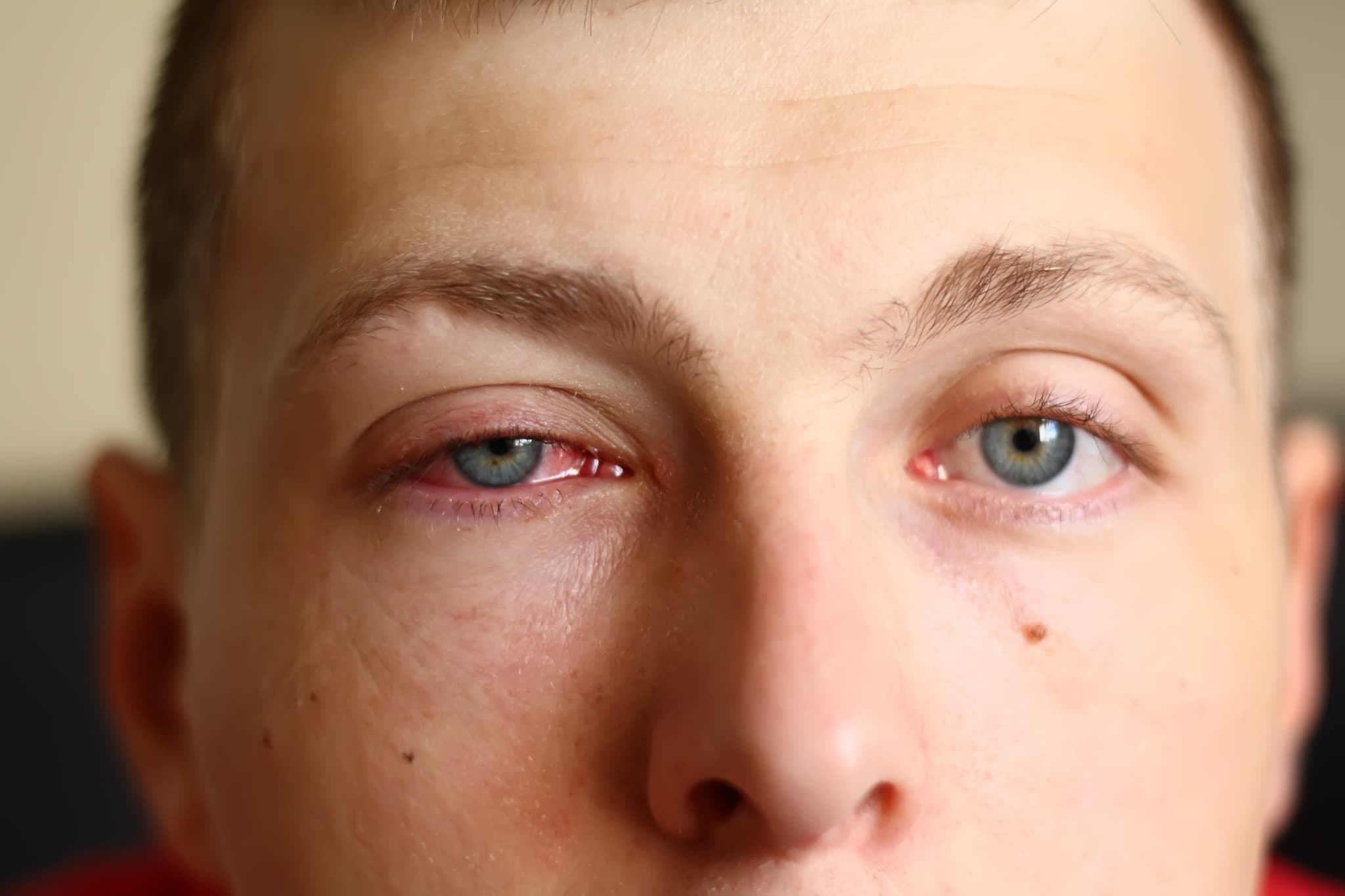Practicing good hygiene is important in maintaining physical health, and there are several diseases and conditions that can be caused in part by bad hygiene. One such disease is called conjunctivitis.
Commonly referred to as pink eye, conjunctivitis is any inflammation or infection of the membrane that covers the eyeball. This membrane is called the conjunctiva, which is where the term “conjunctivitis” comes from. Pink eye causes microscopic blood vessels inside the conjunctiva to become inflamed, causing the visible pink or red color in the eyes many people are familiar with.
In nearly all cases, through hygiene and other methods, pink eye can be prevented.
Causes of Conjunctivitis
There are a few specific causes of pink eye including:
- Viruses and/or bacteria: These are the most common form of pink eye, and they’re more common in children than adults. They can affect either one or both eyes. Both viruses and bacteria produce a discharge from the eyes – in viral infections, discharge is more watery, and in bacterial infections, discharge is thicker and appears yellow or green. Both are very contagious, and often come with typical cold symptoms like sore throat or fever.
- Irritation: Irritation is generally caused by some kind of object in the eye, or a splash of chemicals that aggravate the conjunctiva. Most of these cases are minor, but may feature a mucousy discharge and watery eyes for a few days before clearing up.
- Allergic conjunctivitis: When pollen or another allergen activates allergy symptoms, the result can sometimes be pink eye. The body’s response to certain allergens releases histamines, which are among the causes of pink eye. Allergic conjunctivitis is generally accompanied by much more itching and tearing up than the other types, and you may also sneeze or discharge mucous.
Typical Symptoms
In one or both eyes, some of the symptoms of conjunctivitis include:
- Itchiness or burning
- Redness
- Discharge – Especially at night, discharge may cause a crust and make it hard to open your eyes in the morning
- Tearing
- Gritty, uncomfortable feeling in the eyes
- Swelling in the eyes
- Uncontrollable urge to rub the eyes
- Issues with contact lenses
Diagnosis
Most cases of pink eye can be diagnosed easily by your doctor based on your medical history and the visible symptoms you’re showing. In some cases, your doctor might take a sample of secreted liquid from the eye and test it, especially if you’ve had multiple infections or the cornea is affected by a serious infection. In cases where conjunctivitis is caused by allergies, your doctor may recommend changes to allergy treatment.
Treatment
Treatment for conjunctivitis depends on the what caused the conjunctivitis:
- Viral conjunctivitis: There aren’t specific treatments for pink eye caused by a virus. Some antiviral medications can help in certain cases, but these aren’t common. In most cases, you will have to let the eye heal on its own.
- Bacterial conjunctivitis: Most of these cases clear up without any special treatment, but for cases that don’t, antibiotics often help. If you’re prescribed an antibiotic, make sure you follow exact directions for taking it to make sure your infection doesn’t come back.
- Allergic conjunctivitis: There are different kinds of drugs and eyedrops for people with pink eye caused by allergies. Some control the allergies, and some control the inflammation in the eyes. Your doctor will let you know which is right for you.
- Irritation or other forms: Treated on a case-by-case basis.
Prevention
With some exceptions for people who have conjunctivitis caused by allergies, pink eye is almost always avoidable by practicing good habits. Pink eye spreads very quickly, but basic hygiene can often stop this spread and keep you safe from any risk. A few habits to practice include:
- Wash hands often, and only use clean towels
- Don’t share towels, pillowcases, soap or any other items that touch the eyes or potentially dirty areas of the body
- Don’t touch your eyes with your hands unless absolutely necessary
- Change pillowcases, sheets and towels frequently
- Don’t share cosmetics or eye care products, and throw these out when they’re used up
- For people at higher risk, avoid swimming in public pools (lots of bacteria and viruses can be present)
- For people on antibiotics (for conjunctivitis or for anything else), use for the full prescribed period, even if you think symptoms are gone
Most cases of pink eye resolve in around a week or two, maybe a bit longer in some children. Occasionally, conjunctivitis can lead to more severe vision problems, but your doctor will tell you if this is a possibility in your case. If you’re exhibiting symptoms of conjunctivitis and need treatment, speak with your ophthalmologist.
Revere Health Ophthalmology offers patients the best in eye care, from glasses and contacts to treatment of eye-related diseases and conditions.

